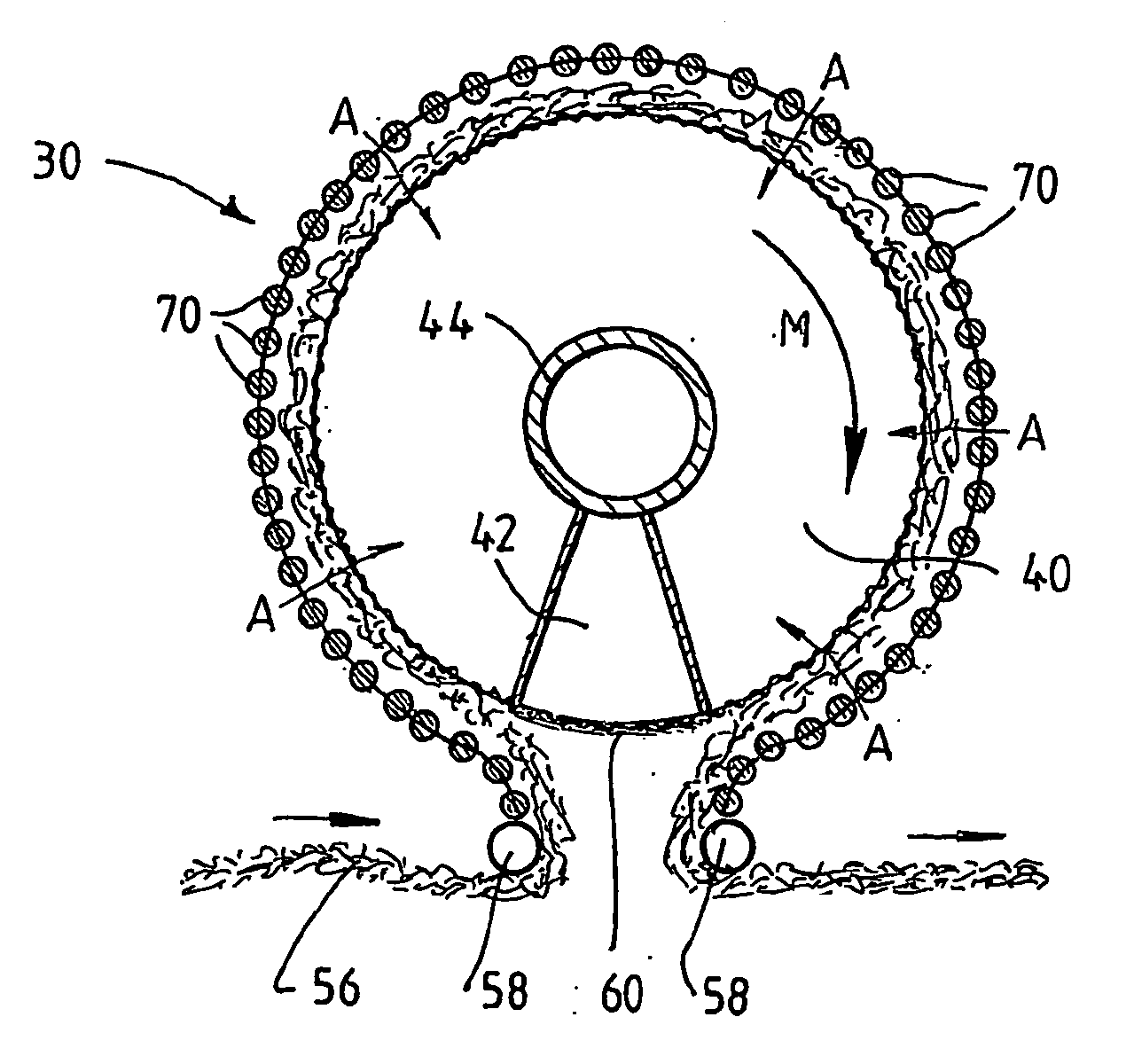Plasma treatment apparatus and method
a plasma treatment and apparatus technology, applied in the field of plasma treatment methods and apparatuses, can solve the problems of repeated microdischarges at the same location, poor uniform treatment, and failure to use all available gas for plasma generation of useful chemical species, etc., to achieve less effective surface treatment, localised excessive absorption of plasma energy, and rapid rise in temperature
- Summary
- Abstract
- Description
- Claims
- Application Information
AI Technical Summary
Benefits of technology
Problems solved by technology
Method used
Image
Examples
Embodiment Construction
[0055] Referring firstly to FIGS. 1 and 2, it will be seen that the plasma treatment apparatus 30 includes a hollow rotatable drum 40 having a first electrode, in the form of a mesh electrode 60, formed on the curved outer surface of the drum 40. The apparatus 30 further includes a second electrode, formed as a plurality of rod electrodes 70, spaced radially outwardly from the mesh electrode 60.
[0056] The mesh electrode 60 comprises a coarse mesh 62 supporting an overlying layer of fine mesh 64. The fine mesh 64 prevents localisation of plasma microdischarges by providing a large array of potential plasma forming locations, in contrast to the course mesh 62 where the reduced number of potential plasma forming locations would ordinarily lead to localisation of the plasma microdischarges.
[0057] As shown in FIGS. 1 and 3, the drum 40 has a tubular core 44 and a wedge-shaped baffle 42 extending from the core to the outer perimeter of the drum 40. The core 44 extends through the drum 4...
PUM
| Property | Measurement | Unit |
|---|---|---|
| Length | aaaaa | aaaaa |
| Length | aaaaa | aaaaa |
| Electric potential / voltage | aaaaa | aaaaa |
Abstract
Description
Claims
Application Information
 Login to View More
Login to View More - R&D
- Intellectual Property
- Life Sciences
- Materials
- Tech Scout
- Unparalleled Data Quality
- Higher Quality Content
- 60% Fewer Hallucinations
Browse by: Latest US Patents, China's latest patents, Technical Efficacy Thesaurus, Application Domain, Technology Topic, Popular Technical Reports.
© 2025 PatSnap. All rights reserved.Legal|Privacy policy|Modern Slavery Act Transparency Statement|Sitemap|About US| Contact US: help@patsnap.com



